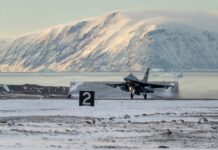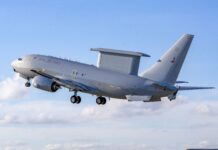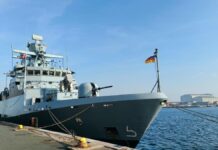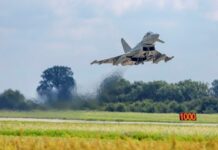The demise of the MBT has been predicted many times, especially after the heavy losses of Israel MBTs in Yom Kippur war and more recently the end of the Cold War in Europe as there was no immediate threat to NATO.
Events since then however have confirmed that the MBT, when used as part of the combat arms team with mechanised infantry, self-propelled (SP) artillery systems, combat engineers, aviation assets and the essential C4I elements, are a unique combination for manoeuvre operations. More recently, MBTs have seen extensive operations in the Middle East as well as in Iraq and Afghanistan where they have more often been used in the infantry direct fire support role rather than engaging other MBTs, which was their original role.
Survivability Enhancements
Many of the Western MBTs were designed for conventional operations in Northern Europe, not operating in the high temperatures encountered in the Middle East against insurgents well versed in deploying IEDs, mines and the widely deployed RPG launcher. For this reason under Urgent Operational Requirement (UOR) funding, MBTs and many other types of AFV deployed to the Iraq and Afghanistan have been rapid upgraded to enhance their survivability. This has included installation of air conditioning systems, RWS, cameras for enhanced situational awareness, electronic devices to counter IED and enhanced protection packages.
The LEOPARD
Most countries in NATO have drastically reduced their MBT fleets since the end of the Cold War. Belgium has phased out of service all of its 105mm armed LEOPARD 1 MBTs while the Netherlands has phased out its LEOPARD 2 MBTs, although one Germany Army tank battalion has a company of LEOPARD 2 MBTs manned by Netherlands crews.
Canada decided to phase out its LEOPARD 1 MBTs but subsequently reversed this decision and acquired a fleet of LEOPARD 2 MBTs, some of which were upgraded by KMW for deployment to Afghanistan. Other NATO countries still retain their MBTs as they can be used for offensive and defensive operations as part of the combined arms team.
Sweden (S-tank) and Switzerland (Pz 61 and Pz 68) both had the capability to design and manufacture a new MBT but in the end elected to procure the German KMW LEOPARD 2 MBT with the first units coming from the German production line followed by local production. Following a competition, Greece and Spain also selected the LEOPARD 2 with first units from Germany, also followed by local production.
To all intents and purposes, the LEOPARD 2 has become the standard MBT of NATO as well as being exported to non-NATO countries including Austria, Chile, Finland, Indonesia, Kuwait, Singapore and Qatar. Some of these, such as Kuwait and Qatar, have purchased brand new latest generation LEOPARD 2 MBTs plus supporting vehicles, while other countries purchased second-hand vehicles which were usually refurbished prior to delivery. While there was once a glut of surplus LEOPARD 2 MBTs, this is no longer the case as significant numbers have been sold while others have been converted to carry out more specialised battlefield roles.
The first LEOPARD 2 MBTs rolled off the production lines as far back as 1979 and in mid-2021 the latest LEOPARD 2A7 was again in production for Hungary as well as upgrade programmes underway for a number of countries.
The LECLERC
The French Army took delivery of 406 Nexter LECLERC MBTs, with the UAE taking 426 (including armoured recovery vehicles), but some of the latter have now been transferred to Jordan.
Production of the LECLERC turrets was undertaken at Tarbes while hull production and final integration was undertaken at the now Nexter facility at Roanne which is now building GRIFFON, JAGUAR and SERVAL wheeled AFVs for the French Army. While the LEOPARD 2 and LECLERC MBTs have been upgraded to extend their operational lives, they will eventually have to be replaced.
The MGCS
France and Germany have been working of the future MAIN GROUND COMBAT SYSTEM (MGCS) since 2012 with a potential service date of around 2035.
MGCS will consist of a family of vehicles with the MBT likely to feature the crew seated in the hull for maximum protection along similar lines to the Russian T-14 ARMATA MBT which is fitted with a remote controlled turret armed with a 125mm smooth-bore gun fed by an automatic loader. Main armament of the MGCS could be a Rheinmetall 130mm smooth-bore gun, which has been undergoing firing trials for several years, a new Nexter 140mm smooth-bore gun or even an electro thermal chemical gun.
There have been some attempts in the past for a common MBT including the MBT-70, a German/US project which reached the prototype stage before each country went its own way, with Germany developing the LEOPARD 2 and the US the M1 ABRAMS. Other countries could join the MGCS but it remains to be seen if this does eventually enter service as technology is constantly changing, as is the threat, while some countries may well try and upgrade their existing platforms.
With any major internal programme there are always problems with work share which can depend on a number of factors such as quantities of vehicle and delivery dates required by the end user. The UK and US were jointly developing a new reconnaissance vehicle called TRACER (Tactical Reconnaissance Armoured Combat Equipment Requirement) but the USA pulled out to fund Future Combat System (FCS) which in turn was cancelled.
There is also the thorny problem of exports. Many countries in the Middle East have wanted the LEOPARD 2 MBT but it is only in recently that Germany has relaxed export sales for Kuwait and Qatar who purchased the latest LEOPARD 2A7 optimised for use in the high temperatures encountered in the Middle East.
The ALTAY
Apart from the LEOPARD 2, the only country in Europe, if one excludes Israel, to develop a new MBT is Turkey with their ALTAY MBT. This was developed under the leadership of Otokar who have produced large numbers of wheeled AFVs for the home and export markets. Following trials with an ALTAY Mobility Test Rig (MTR) and a Firepower Test Rig (FTR), two prototype vehicles (PV1 and PV2) were built and put through their paces by the Turkish Land Forces Command (TLFC). The ALTAY production contract was however placed with the Turkish company of BMC who, while having extensive experience in the design and production of tactical wheeled vehicles and Mine Resistant Ambush Protected (MRAP) type vehicles, had no previous experience in the production of highly complex MBTs.
The first contract is for 250 ALTAY MBTs with a number of local contractors supplying key sub-systems such as Aselsan for the computerised Fire Control System (FCS) and optics, and MKEK for the 120 mm smooth-bore gun and its ammunition. Prototypes of the ALTAY have a German MTU power pack consisting of engine, transmission and cooling system but production ALTAY will have a local power pack. The power pack is the most complicated part of the hull and the number of contractors who can supply this are very limited and South Korea has had problems with designing a local power pack for their K2 MBT.
In recent years, the Turkish land forces industry has gone from strength to strength and today can offer export customers tracked and wheeled AFVs to meet almost all user requirements with major export contracts being won by Turkey in Africa, Middle East and Asia.
The ABRAMS
The largest user of MBTs in NATO is the US Army with the latest version being the GDLS ABRAMS M1A2 SEPv3, which is an upgrade of an earlier version and has many enhancements at the sub-system level.
The US Army continues to invest in 120mm ammunition, including the latest 120mm M829A4 APFSDS-T and the 120mm Advanced Multi-Purpose (AMP) round, designated the XM1147 whilst under development. The AMP has four fuze modes and will replaced the currently deployed M830A1, M1028, M830 and M908 1230 mm rounds currently deployed.
Late in June 2021 it was announced that Poland would acquire 250 GDLS ABRAMS M1A2 SEPv3 MBTs as well as the essential ammunition, training and logistic support.
Upgrades
Today, MBTs have a much longer life than in the past and are usually upgraded a number of times, not only to extend their operational lives but also to enhance their capability. In addition, sub-systems need to be replaced as they are either obsolete or the original supplier is no longer in the defence business.
In the key area of firepower, this can take the form of the installation of a larger calibre main armament, developing new ammunition with enhanced characteristics and upgrades to the FCS and sighting system. For example, the original US GDLS M1 ABRAMS MBT had a 105mm M68 rifled gun (a development of the British Royal Ordnance L7) that as was installed in the earlier M60A1 and M60A3 MBTs but the M1A1 ABRAMS and follow-on M1A2 ABRAMS had the M256 smooth-bore gun which is based on the Rheinmetall 120mm L44 smooth-bore gun and manufactured at Watervliet Arsenal. Rheinmetall subsequently developed the longer 120mm L55 smooth-bore gun which is installed in the LEOPARD 2 A6 MBT and this has been followed by the Rheinmetall 120mm L55A1 smooth-bore gun which enables more powerful 120mm ammunition to be fired.
New Ammunition
As new generation MBTs have increased protection, new ammunition has been developed with enhanced penetration characteristics. The main tank-killing round is the armour-piercing fin stabilised discarding sabot (APFSDS) which typically has a dense long rod penetrator and usually has a tracer element so the gunner can see it in flight.
The US and some other countries use Depleted Uranium (DU) for the penetrator due to its enhanced penetration characteristics, but this cannot be used in peacetime for environmental reasons and many countries will not use it under any circumstances.
In addition to APFSDS, other natures are used including High-Explosive Anti-Tank (HEAT), High-Explosive Squash Head (HESH) and smoke. Due to the increased use of advanced armour solutions and Explosive Reactive Armour (ERA), the effectiveness of HEAT ammunition is much reduced. More recently, 120mm air bursting munitions (ABM) have been developed and deployed and these are very useful when carrying out COIN operations that have been the main role of MBTs in Afghanistan and Iraq. The German Rheinmetall DM11 ABM has been sold to a number of countries including Indonesia and was used by US Marine Corps M1A1 ABRAMS MBTs in Afghanistan, although these MBTs have now been phased out of service and returned to the US Army.
Russia has used gun-launched laser guided projectiles (LGP) for many years but apart from the US 152 mm SHILLELAGH for the M551 SHERIDAN reconnaissance vehicle and US M60A2 MBT, both of which have now been phased out of service, NATO has not deployed any of this type of munition.
The Turkish company of Roketsan is developing a 120mm LGP called TANOK which has a nose mounted semi-active laser (SAL) seeker and has both direct and top attack modes. It is fitted with a tandem HEAT warhead to enable targets fitted with ERA to be neutralised. Roketsan are quoting a maximum range of up to 6,000 m which is well beyond the range and of a conventional tank gun.Russia, and more recently China, have also developed and fielded LGP with the latest Russian 125 mm LGP being fitted with a tandem HEAT warhead.
Upgrades by Non-OEMS
While the Original Equipment Manufacturer (OEM) is best placed to carry out MBT upgrade work, this is not always the case and some governments open this up to competition to reduce costs. A good example is the German LEOPARD 2 MBT for which the OEM is KMW but the German company Rheinmetall, who built a large number of the LEOPARD 2, has also developed an upgrade package for this vehicle which was originally called MBT REVOLUTION, but is today called the Tank Technology Testbed (TTB). This is based on a LEOPARD 2 hull and turret but draws in Rheinmetall’s extensive experience in AFV sub-systems such as:
- a new commander and gunner stabilised day/thermal sights
- cameras for enhanced situational awareness through 360 degrees
- roof mounted RWS
- new grenade launchers
- enhanced passive armour
- an Active Protection System (APS)
The 120mm L44 smooth-bore gun is retained but can be modified to fire the latest Rheinmetall DM11 ABM round. Rheinmetall has exported 103 surplus LEOPARD 2 MBTs to Indonesia of which 61 were upgraded to the LEOPARD 2 RI (Republic of Indonesia) standard which included:
- installation of a new all electric Gun Control Equipment (GCE)
- Auxiliary Power Unit
- air conditioning system
- additional protection
- rear view camera
Rheinmetall also won the contract to upgrade 128 LEOPARD 2A4 MBT for Poland which also incorporate elements of the Rheinmetall TTTB with first vehicles upgraded in Germany with the remainder being upgraded in Poland. Rheinmetall are also working on new turrets armed with their 130mm smooth-bore gun which could be of the conventional type or remote controlled.
Following a competition, RBSL, a joint venture company between Rheinmetall and BAE Systems, were in May 2021 awarded a €770M contract to upgrade 148 of the British Army’s CHALLENGER 2 MBTs to the enhanced CHALLENGER 3 standard. This work will be carried out in Telford and includes a brand new turret armed with the latest Rheinmetall 120mm L55A1 smooth-bore gun coupled to a computerised FCS and Thales commanders and gunners stabilised day/thermal sights incorporating an eye-safe laser rangefinder. Vickers Defence Systems built a total of 386 CHALLENGER 2s at their Newcastle-upon-Tyne and Leeds facilities, but the fleet has already been reduced to 227 units.
Italian company of Leonardo has developed an upgrade package for the M60 MBT which they manufactured under licence many years ago for the Italian Army. This has a host of improvements including:
- a new computerised FCS
- new commanders and gunners sights
- upgraded power pack
- replacement of the 105mm rifled gun with a 120mm smooth-bore gun
- additional passive armour
- a roof mounted RWS for close in protection
While not a member of NATO, Israel has extensive experience in upgrading SHERMAN, M48 and M60 MBTs as well as developing the unique and combat proven MERKAVA MBT which has been constantly upgraded over the years. The latest versions of the MERKAVA have the combat proven RAFAEL TROPHY APS which is now fitted onto some of the US Army M1A2 ABRAMS deployed to Europe and will be fitted to some German Army LEOPARD 2 A7A1 MBTs and British Army CHALLENGER 3 MBTs.
Israel also has success in upgrading other countries MBTs with a good example being the upgrade of 170 M60A3 to the M60T standard for Turkey. Prime contractor for this was Israel Military Industries, since taken over by Elbit with most of the upgrade work being carried out in the facilities of the TLFC who have extensive experience in the overhaul and upgrade of MBTs as well as other AFVs. Elbit has also upgraded T-72M1 MBTs in the key area of FCS.
The Turkish M60T upgrade was extensive and included a new 120mm smooth-bore gun, new power pack, new sighting and FCS, upgraded suspension and new protection package which includes ERA which was first installed on upgraded CENTURION and M60 MBTs of the IDF.
Support Vehicles
In order to maintain their battlefield manoeuvrability on the complex battlefield, MBTs need a number of key support vehicles including Armoured Recovery Vehicles (ARV), Armoured Vehicle Launched Bridges (AVLB) and Combat Engineer Vehicles (CEV). The ideal solution is that these should be based on an MBT platform with the same level of armour and mobility and that they should be introduced at the same time, but this is usually not the case.
The French Army took delivery of only 20 LECLERC ARVs which have a stretched chassis, new superstructure and the same German MTU EuroPowerPack as installed in the LECLERC MBT supplied to the UAE. The French Army has not deployed a tracked AVLB to support its LECLERC MBT but deploys the French CNIM Modular Assault Bridge system which is transported and launched from a 10×10 platform with a protected forward control cab. Today, the standard French Army CEV is based on a modified AMX-30 but in the longer term, this will be replaced by a new wheeled CEV which is currently called the Moyen d’Appui au Contact (MACV), for which there will be a competition. Apart from the LECLERC MBT and ARV and some older AMX-30 based specialised vehicles, the French Army has moved to a total wheeled solution for its fleet of AFV as they have greater strategic mobility than their tracked counterparts and have lower life cycle costs.
The German Army took delivery of its first LEOPARD 2 MBTs as far back as 1974 followed by the BUFFEL ARV in 1991, with the initial production run being for 100 units – 75 for Germany and 25 for the Netherlands. Since then, additional countries have ordered the BUFFEL ARV. Only 36 LEOPARD 1 based AEV were supplied to the Germany Army; they are called Pionierpanzer 1 DACHS. These were followed converting 104 LEOPARD 1 ARV and the original 36 DACHS to a new build standard called Pionierpanzer 2 DACHS. These do not have the protection and mobility to operate with the LEOPARD 2 and in April 2021, a contract valued at €295M was placed with Rheinmetall covering the supply of 44 Pionierpanzer 3 DACHS, with delivery to run from 2023 through to 2029. This was originally developed by Rheinmetall and RUAG as a private venture as the KODIAK. This is already deployed by Singapore, Switzerland, Sweden and the Netherlands.
The current German Army BIBER AVLB is based on the LEOPARD 1 platform but this will be replaced by the LEGUAN based on a LEOPARD 2 chassis with the German Army ordering 24 units for delivery between 2023 and 2018. Prior to this, KMW had already won export LEOPARD 2 LEGUAN AVLB orders from a number of other countries including Singapore, Switzerland and Sweden.
The UK is one of the few countries to have a common MBT fleet which comprises the CHALLENGER 2 MBT, CHALLENGER Armoured Repair and Recovery Vehicle, TITAN AVLB, TROJAN AEV and some driver training vehicles.
For many years, the standard ARV of the US Army was the M88A1 which could not recover the latest ABRAMS MBTs. Further development resulted in the much improved M88A2 which can safety recover the latest ABRAMS M1A2 MBT. The US Army phased out the M728 CEV based on the M60 MBT without an immediate replacement.
Using surplus M1 ABRAMS hulls, the Assault Breacher Vehicle (ABV) was developed with the first customer being the US Marine Corps followed by the US Army with Pearson Engineering providing the front-end equipment.





![2025 in the Western Balkans: A year-end SITREP Soldiers from the Czech company, part of the EUFOR Multinational Battalion, conducted a series of joint training exercises in Mostar alongside operators from Bosnia’s State Investigation and Protection Agency (SIPA). [EUFOR BiH]](https://euro-sd.com/wp-content/uploads/2025/11/Handshake_EUFOR-BiH-218x150.jpg)
![Stratus symbol Initially deployed during Operation Granby, the United Kingdom’s contribution to Operation Desert Storm in 1991, the RAF’s air-launched anti-radiation missile proved to be a radar killer. The missile remained in service, and in the RAF’s inventories, until 2013. [Thomas Withington]](https://euro-sd.com/wp-content/uploads/2025/11/ALARM-Thomas-Withington-Kopie-218x150.jpg)

![Baltic Security: SITREP : US Soldiers assigned to 3rd Battalion, 8th Cavalry Regiment, 3rd Armored Brigade Combat Team, 1st Cavalry Division, Task Force Iron, fire a M1A2 Abrams tank during a live-fire demonstration for Iron Defender 25 at Orzysz Training Area, Poland, on 17 September 2025. [US ARNG/Sgt Eric Allen]](https://euro-sd.com/wp-content/uploads/2025/11/Abrams-firing_US-ARNGSgt-Eric-Allen-Kopie-218x150.jpg)



![Hybrid navies: Integrating uncrewed capability into carrier strike The US Navy (USN) carrier USS John C Stennis (left), the French Navy carrier FS Charles de Gaulle, and elements of their strike groups are pictured sailing together in US Fifth Fleet’s area of operations. The US, French, and UK navies are all developing ‘hybrid’ crewed/uncrewed mixes for their carrier airwing capability. [US Navy]](https://euro-sd.com/wp-content/uploads/2025/09/2-HST-CdG-USN-Kopie-218x150.jpg)